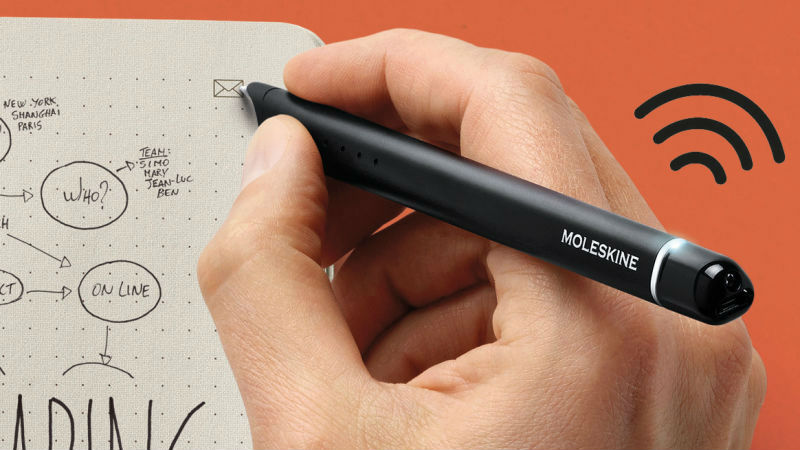Making a shift from paper towards digitisation and technology, Moleskine announced a new electronic pen and paper notebook combination called the Smart Writing Set. The Smart Writing Set includes a “new generation” of Moleskine Paper Tablet and a Pen+. Using this, artists can promptly view what they sketch or illustrate on the Paper Tablet right on their smartphones, tablets or PCs. To view the sketch on the screen they would have to install a companion Moleskine Notes app.
The Moleskine Pen+ comes with an inbuilt infrared camera and technology provided by Neolab that records your movements on paper and sends them to the accompanying mobile app via Bluetooth. Notes can be beamed to the app in real time or up to 1,000 pages of data can be stored inside the pen for later transfer. It can save files in Google Drive, Evernote, or in Adobe’s software suite. The system even allows for editing of notes on physical paper. Users can even share what they draw on social media handles. Accompanying the Pen+ is a new Moleskine notebook, which the company refers to as the Paper Tablet. The Paper Tablet holds the paper with an invisible grid. While there is no touchscreen or electronics of any kind inside it, Moleskine has cleverly made its pages swell outward with a rounded curve, giving it the appearance of a digital tablet. iOS users can save the notes and drawings to the Notes app, while for Android users the company is working on a software as well.
The Smart Writing Set costs $199 comprises a paper ‘tablet’, smart pen and app designed to work in tandem so writers and artists can edit, store and share their work on a phone, tablet or laptop. The Replacement Paper Tablet that comes with 176 blank pages will cost $30 each. But you could always just copy the nCode technology grid and print your own pages for a cheaper option instead. Arrigo Berni, CEO of Moleskine says, “We see demand for our paper-based collections grow in double digits year after year, showing the continued relevance of paper in the digital age. On the other end we are well aware of all the advantages of digital, for editing, curating and sharing. This is why we see analog and digital as a continuum.”
